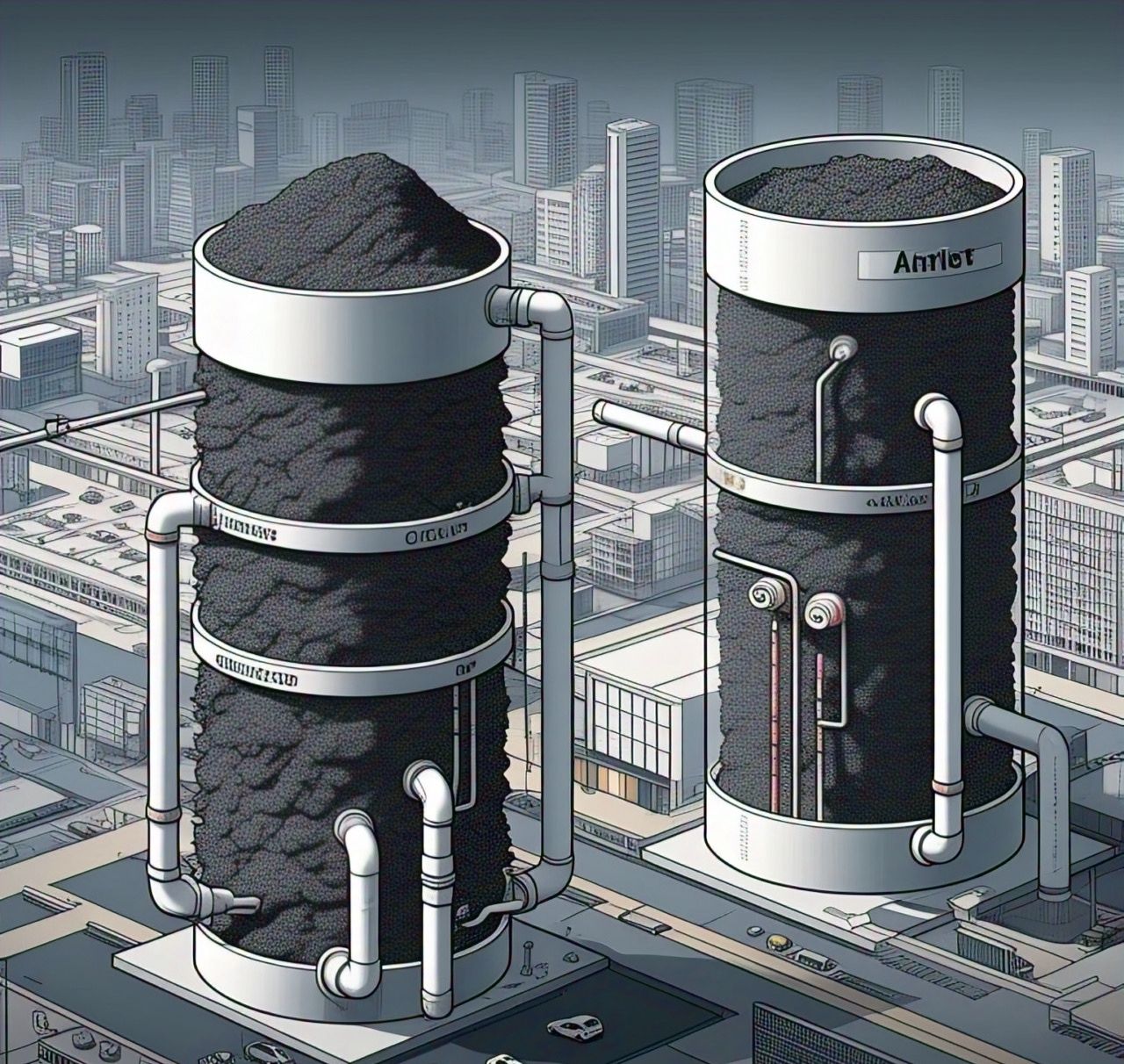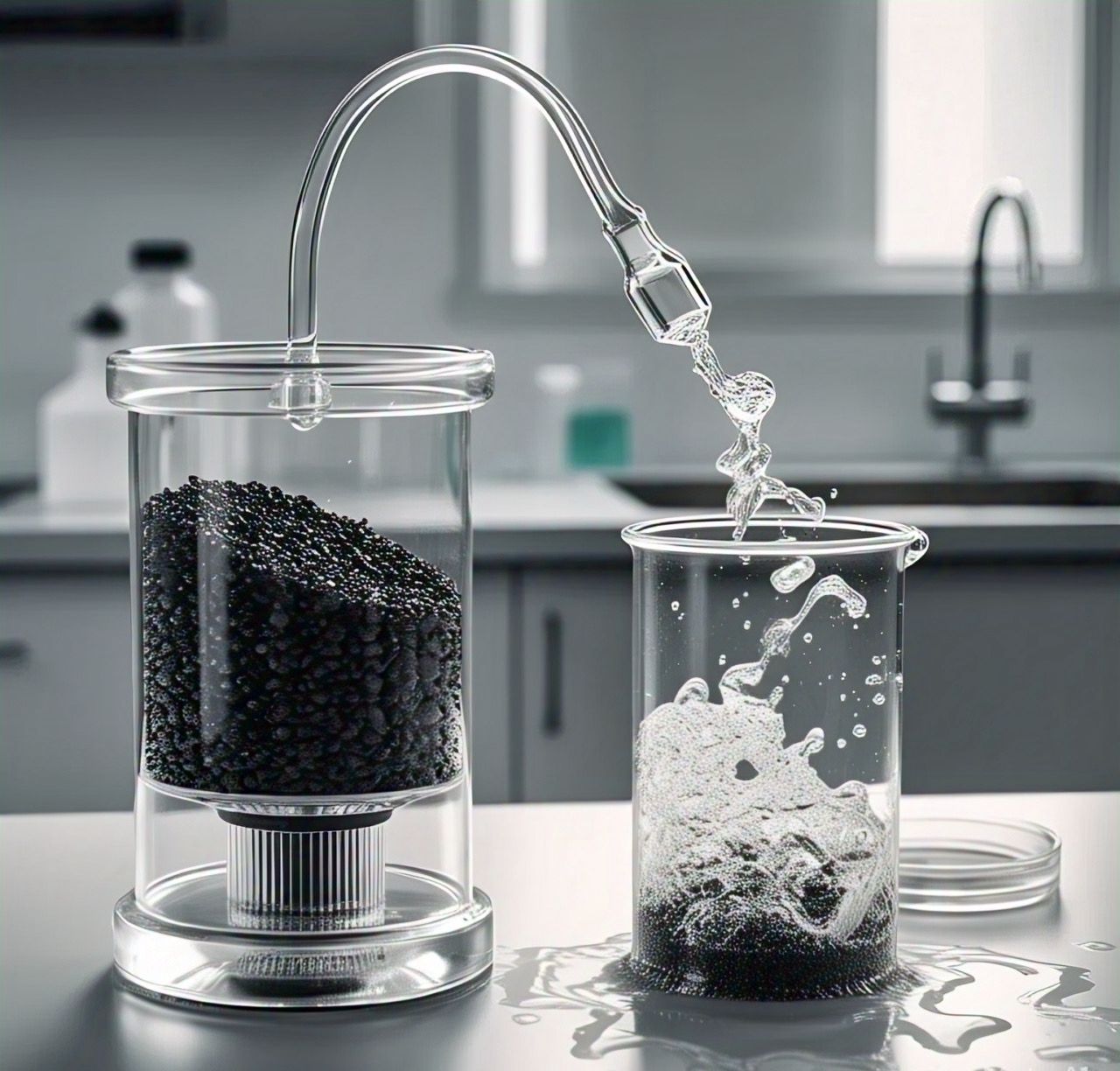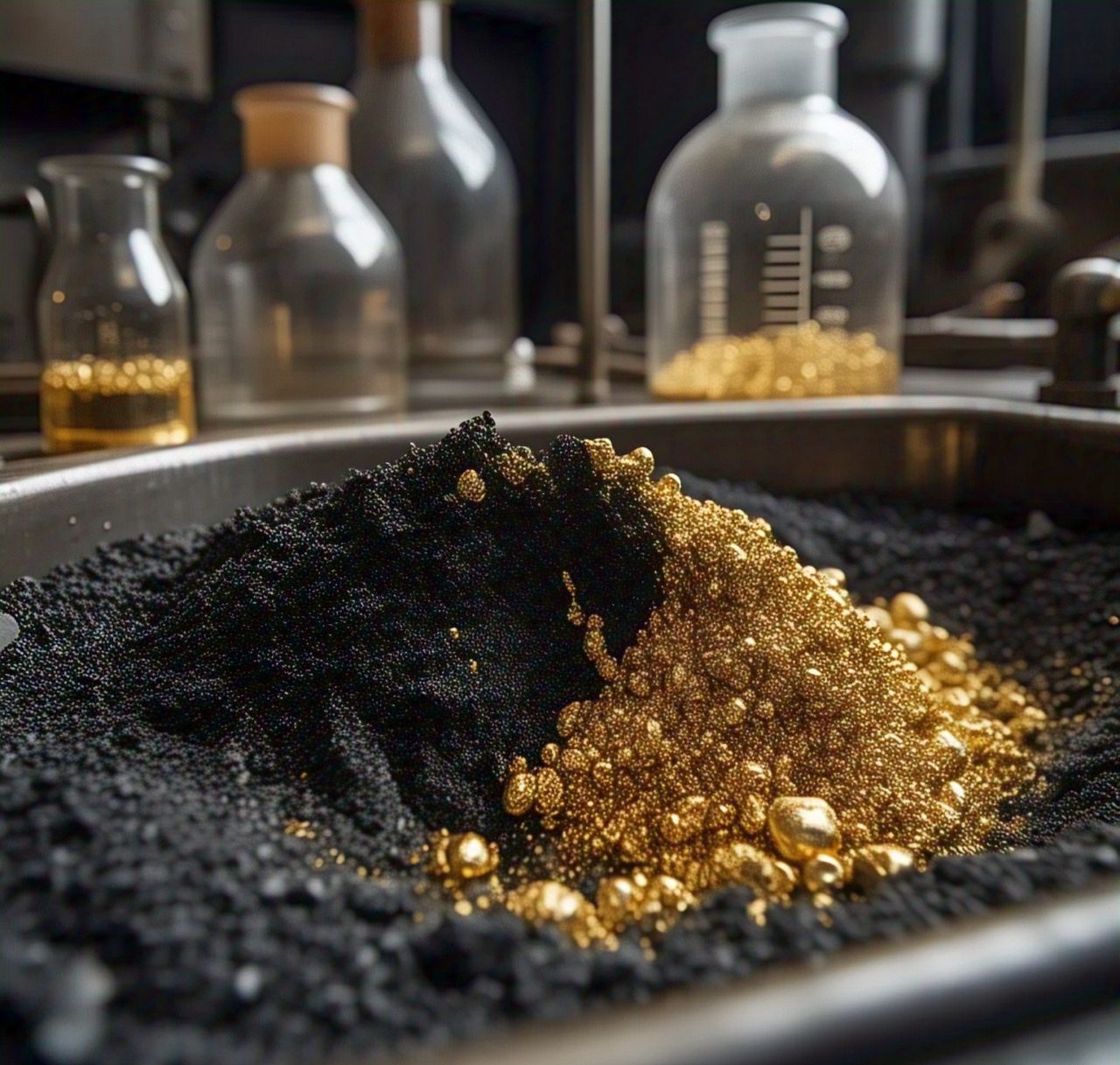Granular Activated Carbon (GAC) is a widely used filtration medium known for its high adsorption capacity and effectiveness in removing contaminants from water, air, and industrial processes. GAC plays a crucial role in purification systems due to its porous structure, which allows it to trap organic and inorganic pollutants, odors, and unwanted chemicals. This blog explores the properties, applications, benefits, and limitations of GAC, as well as recent innovations in its use.
What is Granular Activated Carbon (GAC)?
GAC is a form of activated carbon composed of irregularly shaped granules ranging in size from 0.2 to 5 mm. Unlike powdered activated carbon (PAC), which consists of fine particles, GAC has a larger particle size that enhances its adsorption properties and makes it suitable for continuous filtration applications. GAC is typically made from organic materials like coconut shells, wood, coal, or peat, which are processed at high temperatures in the absence of oxygen to create a highly porous structure.
Properties of Granular Activated Carbon
- High Surface Area: GAC has a vast internal surface area, often exceeding 1,000 m² per gram, enabling strong adsorption of contaminants.
- Porous Structure: The large and interconnected pores provide extensive pathways for pollutant capture.
- High Adsorption Capacity: Effective at removing a wide range of organic compounds, heavy metals, and chlorine.
- Regenerable: Can be reactivated through thermal or chemical processes for multiple uses.
- Versatile: Suitable for water purification, air filtration, and industrial applications.
Applications of Granular Activated Carbon
1. Water Treatment
GAC is extensively used in municipal and industrial water treatment processes. It removes contaminants such as:
- Chlorine & Chloramine: Used in municipal water treatment to improve taste and odor.
- Volatile Organic Compounds (VOCs): Effective in removing benzene, toluene, and pesticides.
- Heavy Metals: Capable of adsorbing lead, mercury, and arsenic from water.
- Microbial Contaminants: Can aid in removing bacteria and viruses when combined with other treatment methods.
2. Air & Gas Purification
GAC is widely used in air filtration systems to remove pollutants such as:
- Industrial Emissions: Traps volatile organic compounds and hazardous gases.
- Odor Control: Used in household air purifiers and industrial exhaust systems.
- Chemical Processing: Helps capture toxic gases in laboratories and manufacturing plants.
3. Food & Beverage Industry
- Decolorization: Removes unwanted colors from beverages like juices and alcoholic drinks.
- Taste & Odor Removal: Eliminates off-flavors from water used in food processing.
- Oil & Fat Filtration: Helps purify edible oils by adsorbing impurities.
4. Medical & Pharmaceutical Applications
- Hemodialysis: Used in dialysis machines to remove toxins from blood.
- Poison Treatment: Used in emergency medical settings to treat drug overdoses and poisoning cases.
5. Industrial & Chemical Processing
- Wastewater Treatment: Removes pollutants from industrial discharge before release into the environment.
- Gold Recovery: Used in mining to extract gold from cyanide leach solutions.
- Solvent Recovery: Helps recover and reuse industrial solvents.
Benefits of Using Granular Activated Carbon
- Effective Contaminant Removal: GAC efficiently adsorbs a wide range of pollutants, making it an excellent choice for purification.
- Improves Water & Air Quality: Enhances taste, odor, and safety of drinking water and indoor air.
- Eco-Friendly & Sustainable: Made from renewable materials like coconut shells and can be reactivated for reuse.
- Cost-Effective: Provides long-term filtration benefits with relatively low maintenance costs.
- Non-Toxic & Safe: Does not introduce harmful chemicals into treated water or air.
Limitations of Granular Activated Carbon
- Limited Lifespan: Over time, the adsorption capacity of GAC decreases, requiring periodic replacement or reactivation.
- Not Effective for All Contaminants: Does not remove dissolved minerals, salts, or microbial pathogens without additional treatment.
- Potential for Bacterial Growth: If not maintained properly, GAC can become a breeding ground for bacteria in water systems.
- Requires Proper Handling: Spent GAC must be disposed of or regenerated correctly to prevent secondary contamination.
Recent Innovations in Granular Activated Carbon
- Nano-Enhanced GAC: Incorporation of nanomaterials to improve adsorption efficiency.
- Biochar-Based GAC: Developing carbon from agricultural waste to create more sustainable filtration solutions.
- Electrically Regenerated GAC: Using electrochemical methods to extend the lifespan of activated carbon.
- Hybrid Filtration Systems: Combining GAC with UV, ozone, or membrane filtration for enhanced purification.
Conclusion
Granular Activated Carbon (GAC) remains one of the most effective and versatile filtration media available for water, air, and industrial purification. Its high adsorption capacity, renewable nature, and adaptability make it an essential component in modern filtration systems. While it has some limitations, ongoing innovations in GAC technology continue to improve its efficiency and sustainability. As the demand for clean water and air increases, GAC will continue to play a critical role in global purification efforts.
Recent blog posts

 November 28, 2022
November 28, 2022
How Activated Carbon Improves Air Quality and Reduces Pollution 
Activated carbon effectively removes pollutants, harmful gases, and odors from the air through its high adsorption capacity. Used in air filters, industrial emissions control, and environmental protection, it helps create cleaner and healthier air by reducing toxins and improving air quality.
Carbon
Air & Gas
High Quality

 June 19, 2023
June 19, 2023
The Importance of Activated Carbon in Water Purification 
Activated carbon is essential for water purification, effectively removing contaminants, chlorine, chemicals, and odors. Its high adsorption capacity ensures clean, safe drinking water and is widely used in municipal, industrial, and household filtration systems to improve water quality and protect public health.
Carbon
Air & Gas
High Quality

 July 11, 2022
July 11, 2022
Gold Recovery: The Role of Activated Carbon in the Mining Industry 
Activated carbon is widely used in gold mining to extract gold from cyanide leach solutions. Its high adsorption capacity ensures efficient gold recovery in processes like Carbon-in-Pulp (CIP) and Carbon-in-Leach (CIL), making extraction more effective and sustainable.
Carbon
Air & Gas
High Quality


